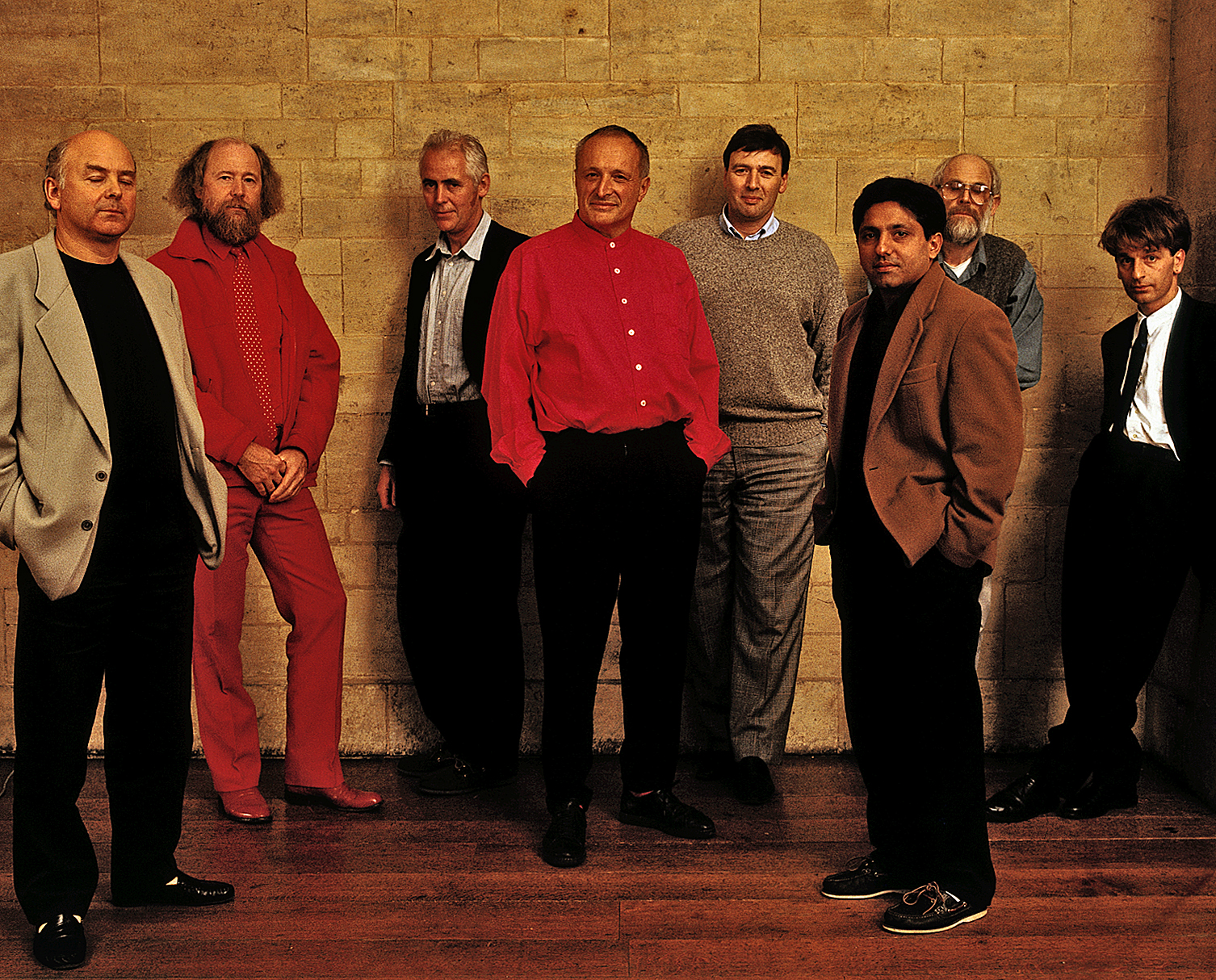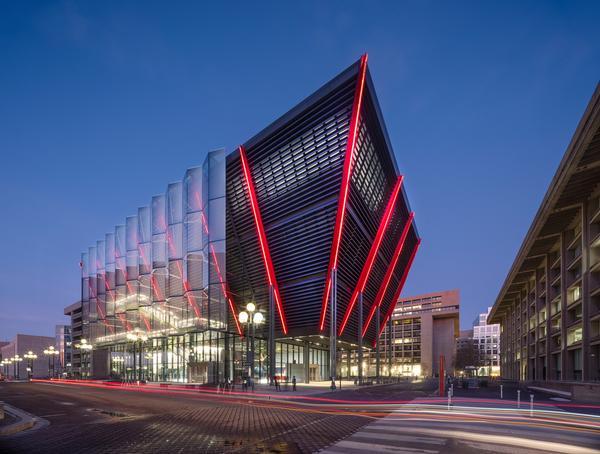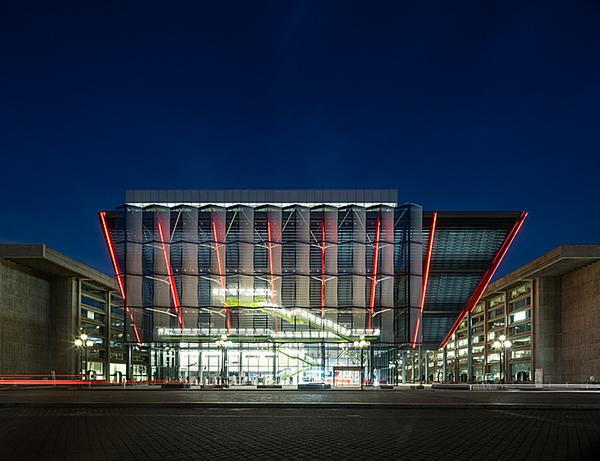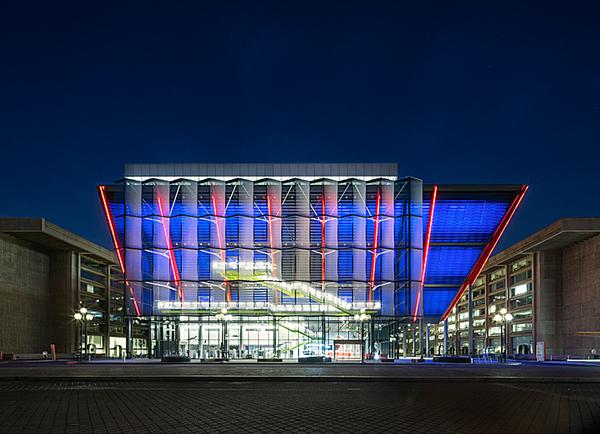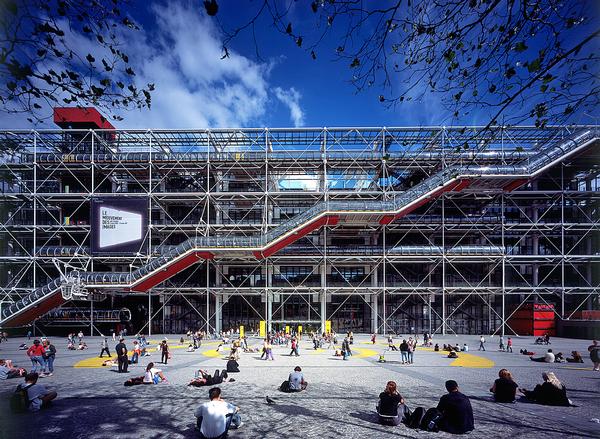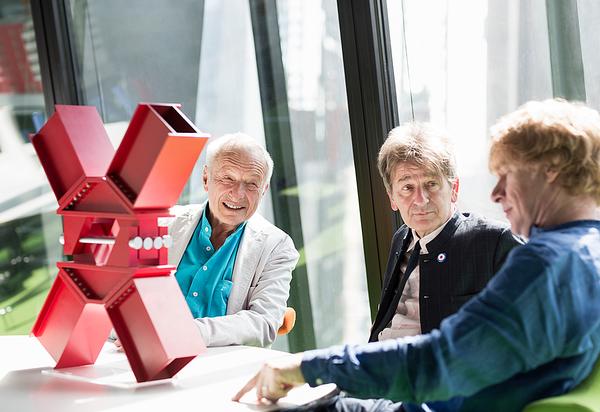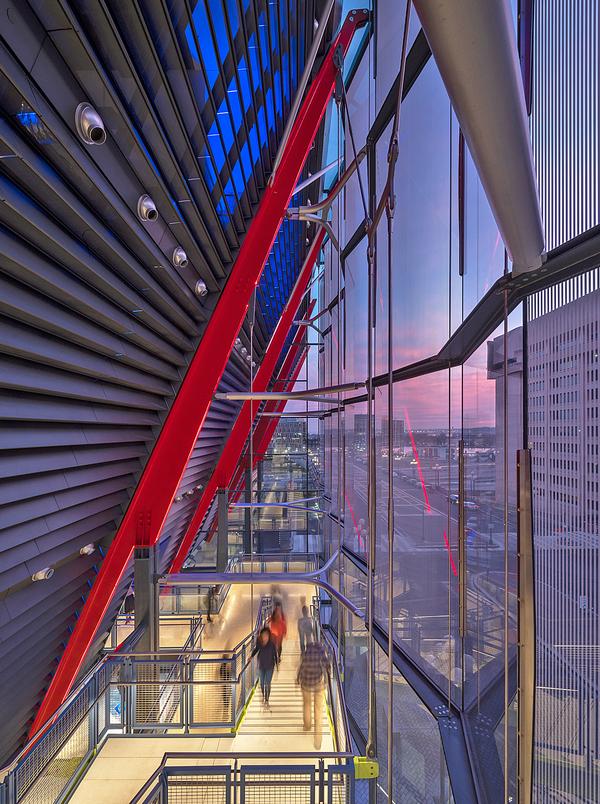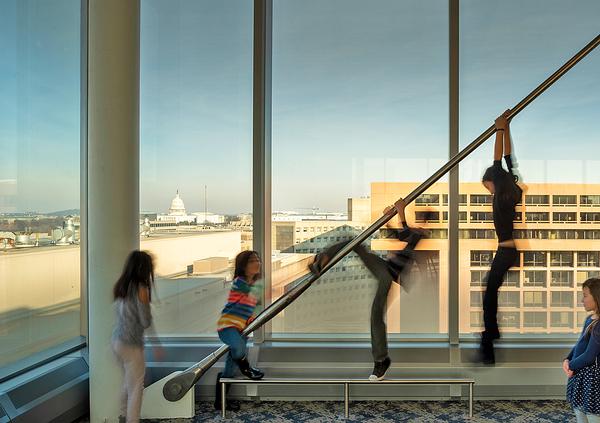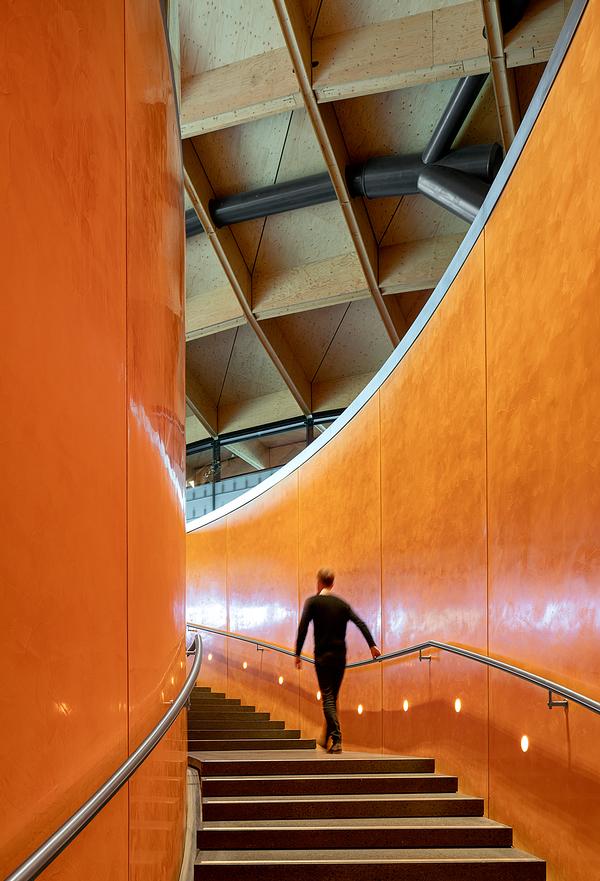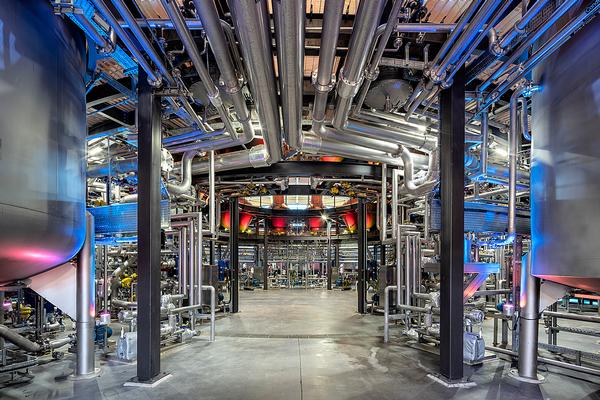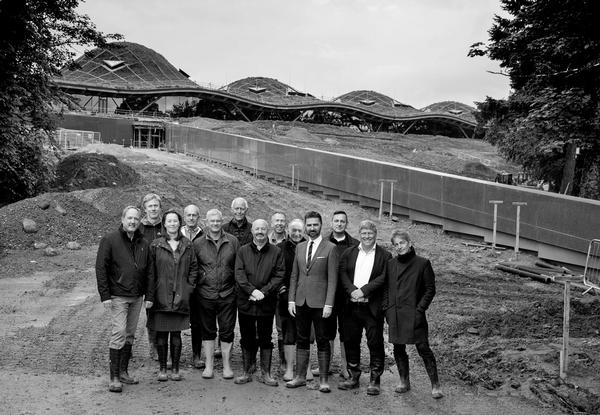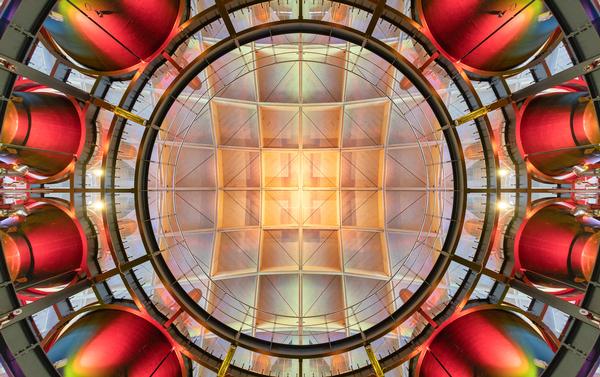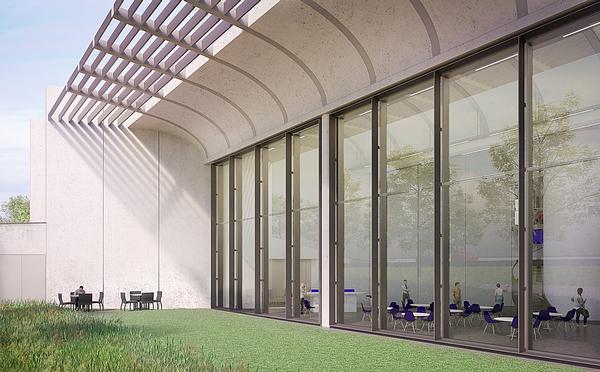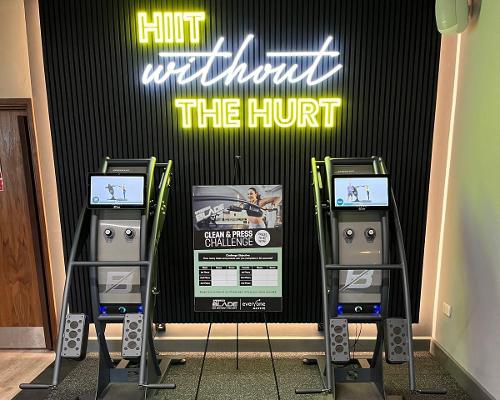features
Interview: John McElgunn and Stephen Barrett
Following the launch of RSHP’s newest cultural building, partners John McElgunn and Stephen Barrett talk public space, leisure and legacy with Magali Robathan
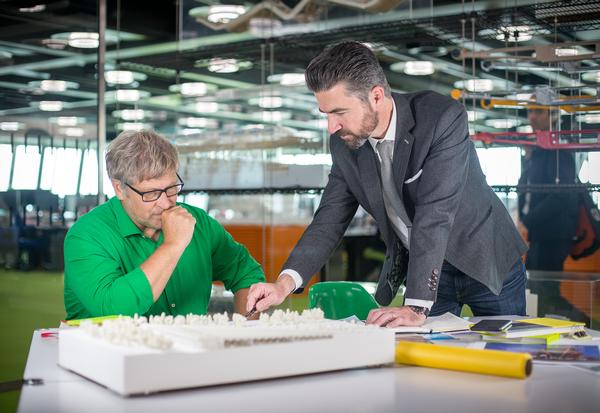
I meet John McElgunn and Stephen Barrett at their 14th floor London office in the RSHP-designed Leadenhall Building – or the Cheesegrater, as it’s more popularly known.
The tower’s triangular shape – it was designed this way to avoid encroaching on a critical view of St Paul’s Cathedral from Fleet Street – makes the building instantly recognisable, but it’s the amount of publicly accessible space at its base that sets it apart from most of the other towers in the area. At more than 2,000sq m, it’s a large undeveloped area for this densely developed part of the City, which provides, according to the designer, Graham Stirk, senior design partner at RSHP: ‘A rare breathing space within the dense urban character of the City of London’. Strictly speaking, it’s privately owned (commissioned by developers British Land and Oxford Properties and sold to developers, CC Land in 2017) but it’s open to the public and when I arrive it is being well used, with people sitting on the benches, chatting, and eating their lunch.
The Leadenhall Building is a good example of several of RSHP’s key approaches, including the flexible nature of the building, the celebratory display of its structure and services and the use of bright colours seen in the furnishings of the practice’s offices. Most importantly, say RSHP partners Barrett and McElgunn, it’s the provision of public space which really reflects the aspirations and philosophy of the practice.
Barrett, who joined RSHP in 1993 and was made partner in 2016, leads the design for many of the practice’s French projects, and heads up the firm’s sustainability group. McElgunn joined in 2001 and was made partner in 2016. Working with Graham Stirk he has been heavily involved in RSHP’s cultural projects, leading the team that delivered the British Museum’s World Conservation and Exhibitions Centre in 2014. He went on to work on a new conservation and storage facility for the Louvre in Lieven, France, due to be inaugurated in October 2019. He is also involved in the potential extension to the British Library in London.
PUBLIC V PRIVATE SPACE
“The idea of providing high quality space for the public is one of our key principles,” says Barrett. “The Leadenhall tries to be very generous in what it gives back to the city – that was important. “It’s not just about designing a beautiful building; the space around the building also matters. It matters that there are places for people to meet and greet.”
When I interviewed Richard Rogers three years ago, he was very keen to talk about the privatisation of our public spaces, and how architects have a responsibility to protect those spaces.
“Leisure space – public space – is at the very root of democracy, and architecture is about democracy,” he told me. “We have a responsibility not only as architects but also as citizens. Our responsibility is to defend the quality of life of the individual.” He cited the Leadenhall Building as an example of how architects can work for private clients and still contribute to the public good, explaining how Stirk’s vision for the Leadenhall Building was to create a new public space for all at the base of the tower.
“This is something that the office has a strong legacy on, says Barrett. “The Pompidou Centre [designed by Richard Rogers and Renzo Piano in 1977] was a building, but a key part of that project was the creation of the square at the front. That meant putting twice as much building on half a site, but it was a big, generous gesture that recognised that the city is a place where all different kinds of people meet. Making sure space is accessible for everyone is a really important principle.”
Ensuring good quality public space is part of the projects they work on is something that the practice pushes clients hard on, Barrett continues. “Absolutely we do,” he says.
FOCUS ON CULTURE
I am here to talk to Barrett and McElgunn about RSHP’s cultural buildings. While the practice made its name designing the Pompidou Centre, it was a long time before another cultural project came along. Over recent years, that’s changed, with a run of cultural buildings designed by Graham Stirk including the British Museum’s World Conservation and Exhibitions Centre; the ongoing British Library extension project; the recently opened (and RIBA Stirling-Prize-nominated) Macallan Distillery and Visitor Experience in Scotland; and the Louvre Conservation and Collections Facility is Lieven, France, which will complete in autumn 2019.
The latest completed cultural building, which has just opened when I interview Barrett and McElgunn, is the International Spy Museum in Washington, US, designed by Ivan Harbour.
The 13,000sq m building – which represents a permanent new home for the non-profit organisation that was previously housed in the Le Droit Building in downtown Washington – has been designed to contrast strongly with the predominantly concrete buildings that surround it. The exhibition spaces are housed inside an angled black box with bright red columns that ‘leans out’ into the street, creating protected space beneath it.
“It’s surrounded by this really imposing IM Pei brutalist masterplan,” says McElgunn. “Buildings that are very beautiful in their own right but austere, very serious. Very US governmental. And then there’s this kind of little butterfly chrysalis in the middle. It’s quite eccentric, but it’s very beautiful.”
As a British practice, RSHP were able to bring something quite different to Washington’s L’Enfant Plaza, says Barrett. “The difference of the Spy Museum in Washington relative to the context is partly down to the fact that as an international practice we bring something new and dynamic,” he says. “We were a disruptive, creative force in a way.
“That [creativity] was lost slightly in the US for a while, I think partly because commercial pressures and the legal set up there meant people became quite risk averse. It’s interesting going back; there’s more risk taking at the moment. There are some really good museums being built.”
In June, the RIBA announced the shortlisted projects for the 2019 Stirling Prize. The list included RSHP’s Macallan Distillery and Visitor Experience in Speyside, Scotland.
Cut into the hillside, the visitor centre is a beautiful, clever building, with a rolling grass-covered roof that ensures it blends in well with its surroundings, and big, light-filled interiors that showcase the pipes and copper stills used to make the Macallan whisky.
“That project came about when the client took a trip through France and Spain and saw all these vineyards building their own wineries and bodegas,” says McElgunn. “They thought, nobody’s doing this for whisky. Why don’t we?
“It’s a spectacular building; just stunning. It’s on a beautiful site in an area of outstanding natural beauty – this building is an homage to the beautiful hills all around it. Inside, it’s becomes a kind of Jules Verne experience – all the stills are on display and it looks almost like a Victorian time machine.”
It’s not just a good-looking building however; it is technically very impressive, adds Barrett. “I didn’t work on the project, but I know that little things like negotiating public access to walk around the stills wasn’t simple. They’re very hot, and it is all part of an active industrial process.
“There’s a two-hour explosion-proof glass wall between the still house and the visitor centre. You can entirely see through it and it’s technologically highly proficient. In order to prove to the Scottish authorities that it was a legitimate solution, we had to work with our engineers, build a test rig and test it.
“You need a certain kind of client who’s willing to go down that route,” Barrett continues. “It would be a lot easier to say, let’s just build a concrete wall there.”
THE FUTURE
Looking ahead, the practice is currently working on a number of cultural projects including the British Library expansion in London, UK; the Louvre conservation and storage facility in Lieven, France; and an elevated sky garden, the Urban Living Room in Shenzhen, China.
The Shenzhen sky garden project will span 1.2km of reclaimed land, providing a public garden elevated above the roads terminating in a large public space – set to contain an opera house and convention centre – named Performance Park.
Speaking as the project was unveiled, Richard Rogers said: “Qianhai is a dynamic emerging urban centre. Having the opportunity to create this bold intervention will focus the city’s attempt to create a rich and diverse, culturally led public realm.”
The British Library expansion – which is going ahead after the institution signed a development agreement deal in February – will see the creation of 9,300sq m of new spaces on a site to the north of the library’s Grade 1 Listed building at St Pancras in north London.
“It’s a great honour and totally terrifying to have the opportunity to put a new building at the back of something that is so loved,” says McElgunn. “It’s a great challenge to have.”
Both McElgunn and Barrett are involved in the Louvre project, which sees RSHP designing a conservation facility to store 250,000 works of art and protect them from the kind of flooding that saw the Seine breach its banks in 2016 and forced the Louvre to shut down part of the museum.
The new building, which will be inaugurated in October, provides 18,500sq m of floor space, and features a gently sloping green roof that helps it blend into its surroundings.
“That project was built on our technical experience and all the things we have learned from building airports, museums and other logistical kind of buildings, but there’s also a real poetry to the design; to the way it’s buried in the ground and the way the earth rises up,” says Barrett.
A LONG TERM VIEW
Rogers Stirk Harbour + Partners (RSHP) was set up by Richard Rogers in 1977 as the Richard Rogers Partnership. An innovative and distinctive architect, a key player in the High-Tech architecture movement, a champion of environmental sustainability with a strong sense of responsibility, Rogers has been awarded most of architecture’s biggest prizes during the course of his career, including the AIA Gold Medal 2019.
While many architects don’t plan for their succession, Rogers was determined to ensure the practice’s legacy would continue once he was gone. In 2007, as part of a long-term succession plan, the practice was renamed RSHP to recognise the contributions of Ivan Harbour and Graham Stirk. Five new partners were created – including Stephen Barrett and John McElgunn – in 2016. At Rogers’ request, it’s been written into the practice’s constitution that his name will be dropped from the firm’s title two years after he retires.
“Richard has always had this idea that you should never have a practice named after someone who’s dead or retired,” says McElgunn. “He said, When I go, my name will go with me. That was always part of his plan.”
“Richard is very conscious that a lot of offices that have a particular culture and way of doing things don’t always manage to thrive after the departure of their founder or named partner. He very much wanted that not to be the case. That’s why it was anticipated from 2007, and that’s the reason for the name change. I think that’s a reflection also of his generosity. It’s to do with a certain form of sharing.”
RSHP’s ‘way of doing things’ stems from Rogers’ and the founding partners of RRP – John Young, Marco Goldschmied and Mike Davies – social vision, and includes a desire to be as democratic and non-hierarchical as possible. The practice is owned by a charity and no director has direct equity in it. The office is open plan and everyone’s input is welcomed, according to Barrett and McElgunn.
“I remember the most significant thing for me when I joined was that Richard asked me for my opinion on something,” says Barrett. “I’d just literally joined the day before and that was very different to what I’d experienced before in architecture.
“The office is deeply inclusive,” he continues.
RSHP is owned by the Rogers Stirk Harbour + Partners Charitable Foundation and 20 per cent of pre-distribution profit is donated to charity each year. “We’re not signing big corporate cheques,” says McElgunn. “A lot of that money is distributed to staff to donate on behalf of the charity, so they can support charities they care about and are passionate about.”
The firm also has a staff profit sharing scheme and places a strong emphasis on supporting students. “We never have done, and never will, accept unpaid interns,” says McElgunn. “We try and pay everyone above the odds, but particularly our year out students and graduates because for them a small increase makes a bigger difference. These things are very important.”
“This office is such a people place – there’s a real warmth – and that’s down to Richard,” says Barrett. “He’s such a people person. It’s his strength – he just draws people in. One of his legacies will be a generosity of spirit, which I very much hope we will be able to carry on.”
From the architect: Rogers Stirk Harbour + Partners is an international architectural practice based in London. In total, RSHP employ a little over 200 staff including specialist support teams who offer in-house graphic design, visualisation, film, and communications services.
The practice is experienced in designing a wide range of building types including: office, residential, transport, education, culture, leisure, retail, civic and healthcare. The quality of its designs has been recognised with some of architecture’s highest awards, including two RIBA Stirling Prizes, one in 2006 for Terminal 4, Madrid Barajas Airport and the other in 2009 for Maggie’s West London Centre.
The firm was founded as the Richard Rogers Partnership in 1977 but over time evolved and in 2007 the decision was made to rename the firm Rogers Stirk Harbour + Partners to reflect the vital contributions of Graham Stirk, designer of the award-winning Leadenhall Building, and Ivan Harbour, designer of the Stirling prize-winning West London Maggie’s Centre. The practice now has 13 partners, with several long-standing members of the practice being named partners in 2016.
